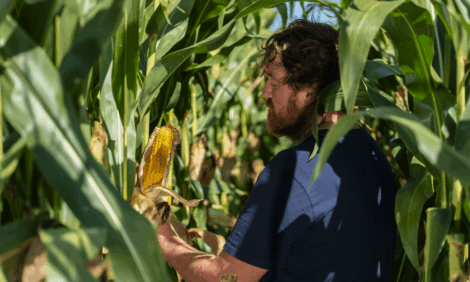



Vaccines And Microbials To Control E.Coli
Since E.Coli 0157 was recognised as a serious food safety issue in the 1980's following a poisoning outbreak in the US in hamburgers, there have been numerous attempts to institute controls, writes TheCattleSite senior Editor, Chris Harris.Initially, the controls in the US began with interventions in the processor and initial attempts to control the pathogen at pre-harvest were unsuccessful, largely because the industry had taken the wrong approach, Guy Loneragan an epidemiologist at West Texas A&M University said in his presentation to the recent National Cattlemen's Beef Association convention in San Antonio.
He said that until the outbreak of food poisoning in the 1980s, food safety in beef had really taken a back seat to concerns over fat and cholesterol.
However, intervention and surveillance has managed to reduce the incidence of E.Coli poisoning gradually since the mid 1990s, when it became the centre of attention, particularly as ground beef testing grew.
He said that there were big gains in the battle against E.Coli between 2004 and 2006, but in the US more media exposure then started to highlight the problems surrounding the pathogen.
Now, he said there is a political momentum to tackle the problem and this could change the way beef is produced.
With more testing taking place and in some cases now calls for plants to be closed because of the threat from E.Coli, there have been moves in the USDA and the Food Safety and Inspection Service to review the way they are protecting public health and also the pre-harvest recommendations for testing for E.Coli.
Dr Loneragan said there has been a shift to what can be done before the animals actually get into the processing plant.
He said the main pre-harvest interventions are through direct-fed microbials or by vaccines for both E.Coli 0157 and Salmonella . He said that sodium chlorate targets both E.Coli 0157 and Salmonella and also there are currently bacteriophages available.
However, he added that there is still a need to inject reason into the arguments so that science informs the policies that are made by the government bodies.
Dr Loneragan said that there has been progress and it is now possible to reduce the burden of E.Coli 0157 both on leaving the farm and on entering the packing plant.
He said that a series of more than 10 peer review papers on new vaccines showed they produced a significant reduction in shedding or colonisation of the E.Coli 0157.
He showed that some products have an effect of reducing the burden of E.Coli 0157 in the faeces and on hides. Others target specific characteristics of the bacteria, and these have also shown success.
However, he said that the bacteriophage acts as a type of predatory biological control.
It can be administered to the cattle in the feed, on the hide and on the meat surface and the results on recent studies are now starting to be published.
Looking at direct-fed microbials as a prevention for E.Coli 0157, Dr Mindy Brashears, the director of the International Center for Food Industry Excellence, said that in research on applications of microbials to cattle four out of five animals had shown an 80 per cent shedding of E.Coli 0157.
While the controls took 60 days to shed the pathogens, animals on direct fed microbials took three to seven days and showed a three to five log reduction.
She said the animals were fed a Lactic Acid Bacteria as a supplement for the last 56 to 60 days of feeding at a very high dose.
The studies took place during the summer, when the prevalence of E.Coli is high and while the control showed a natural decline in the pathogen, there was a sharper decline in the cattle administered with the microbial.
She said the high dosing is more effective , but care has to be taken as the microbials can work on each other.
The study that took place at Texas Tech University showed that while the presence of E.Coli in the manure in the control was log 3.2, the treated animals showed a presence of 0.9 log.
"Consistently, year on year faecal studies show a reduction in E.Coli in treated samples," said Dr Brashears.
The microbials have also been seen to work to reduce both E.Coli and Salmonella when mixed with other products in an application after slaughter.
"The use of these cultures can improve the safety of the beef supply and potentially reduce outbreaks and recalls associated with this pathogen," Dr Brashears said.
"The animal performance is dose related and a high and low programme combining high and low doses may be the most effective in improving animal performance and food safety."
Now, Dr Brashears added they are working out ways of labelling products that have been treated in this way.


